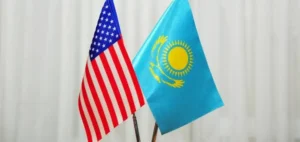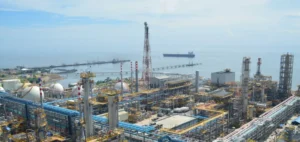The United States has imposed a new set of sanctions on actors involved in Iran’s oil logistics chain, extending its strategy beyond Tehran to include commercial and maritime partners located in Asia. This measure concerns seventeen entities and six vessels involved in the transportation of crude oil, bitumen and liquefied petroleum gas to India, Singapore, Vietnam and the United Arab Emirates.
Increased pressure on Asian maritime services
The sanctions package includes maritime companies based in Greece and Vietnam, traders in India and the United Arab Emirates, as well as a pilotage services provider in Singapore. All are linked to the distribution of Iranian oil through the network controlled by Sepehr Energy Jahan Nama Pars, an entity affiliated with Iran’s armed forces. This financial apparatus directly supports Tehran’s military programmes.
The sanctioned vessels operate outside of mainstream circuits, using practices such as flag-switching, disabling AIS tracking systems and conducting ship-to-ship transfers at sea. These measures show Washington’s intention to increase pressure across the full logistics chain, no longer focusing solely on Iranian firms or front companies.
Commercial consequences on discounts and flows
Some Iranian barrels have reportedly been sold at discounts reaching $17/barrel below international benchmarks. This level reflects the growing regulatory risk borne by intermediaries. Nevertheless, Iranian exports continue to reach markets such as Chinese independent refineries and infrastructure sectors in India and Southeast Asia.
The inclusion of companies such as TR6 Petro India and Bonjoure Commodity demonstrates that Asian actors must now consider the risk of secondary sanctions in their commercial decisions, even for refined products such as bitumen.
Geopolitical and diplomatic repercussions in the region
The designation of these companies comes amid ongoing tensions in the Strait of Hormuz, where Iran has seized several foreign vessels. In parallel, the sanctions serve as an alternative to military response, by affecting Tehran’s financial resources. The inclusion of Asian intermediaries, notably in Singapore, forces regional governments to reassess their position on Iranian oil.
In India, the commercial impact for TR6 Petro India could prompt a regulatory or diplomatic reaction, as New Delhi seeks to maintain balance between its ties with the United States, Russia and Iran. In Southeast Asia, logistics service providers are now clearly within the scope of actors exposed to the US sanctions regime.
Industry adjustments under external pressure
For targeted shipowners and operators, sanctions cut off access to US dollar financing, maritime insurance services and most international ports. The affected vessels become difficult to operate outside of marginal networks that tolerate sanctioned assets, reducing their commercial value.
Port service companies such as Strasselink Pte in Singapore now face significant operational constraints, despite having no direct capital ties to Iran. These cases illustrate the extraterritorial reach of the US sanctions regime, which is redefining compliance standards in Asia’s logistics hubs.
Price stability and inter-barrel competition
The impact on global oil prices remains limited, partly due to other OPEC+ producers’ ability to offset potential Iranian supply shortfalls. However, regional price differentials are widening between Russian, Iranian and non-sanctioned barrels, increasing competition in Asian markets.
This situation is triggering a revaluation of risk: financial intermediaries, insurers and port authorities across Asia are being forced to strengthen controls, as transparency over cargo origin becomes increasingly critical to avoid future sanctions designations.






















